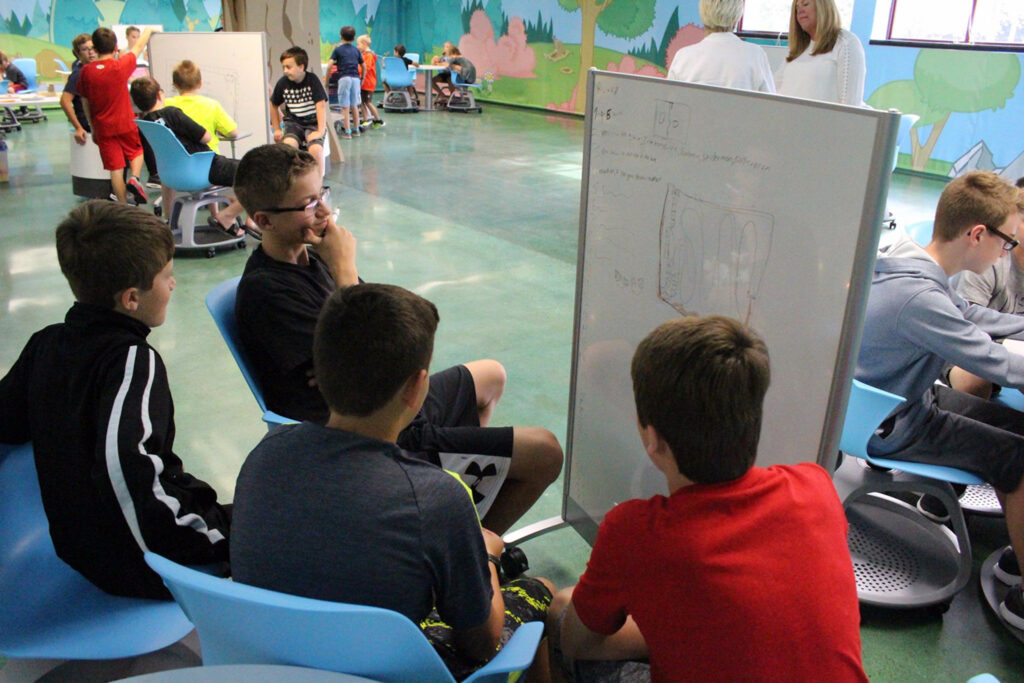Creating an Innovation Mindset through Early Applied STEM
![]() Science, technology, engineering, and mathematics (STEM) education is essential for equipping students with the skills needed to thrive in today’s fast-paced, technology-driven world. STEM-related occupations are in high demand and crucial to the future American job market. Therefore, K-8 schools in America must begin to prioritize applied STEM education in their curriculum.
Science, technology, engineering, and mathematics (STEM) education is essential for equipping students with the skills needed to thrive in today’s fast-paced, technology-driven world. STEM-related occupations are in high demand and crucial to the future American job market. Therefore, K-8 schools in America must begin to prioritize applied STEM education in their curriculum.
Early exposure to STEM subjects can help to spark a child’s interest in these fields, potentially leading to a lifelong passion for science and technology. In addition, when students are introduced to and engage in STEM concepts at a young age, they are more likely to develop an appreciation for the way science and technology shape our world. This enthusiasm can translate into a strong motivation to pursue a career in STEM, leading to more qualified professionals in these fields and creating an innovation mindset.

Additionally, STEM education can help students develop critical thinking, problem-solving, and analytical skills. These skills are essential for the future workplace. By providing students with opportunities to engage in hands-on activities, experiments, and innovation, they can learn to approach problems systematically and logically. This thinking can be applied to any field, making STEM education highly relevant to all students, regardless of their future career goals.
![]() Moreover, STEM education can help to address the gender and racial disparities that currently exist in STEM fields. By introducing these subjects early in a child’s education, students from underrepresented groups can feel empowered to pursue careers in these areas. For example, according to a study by the National Science Foundation, only 29% of the science and engineering workforce comprises women and minorities, despite making up nearly 70% of the overall workforce. By providing access to STEM education to all students, we can work towards a more equitable workforce in the future.
Moreover, STEM education can help to address the gender and racial disparities that currently exist in STEM fields. By introducing these subjects early in a child’s education, students from underrepresented groups can feel empowered to pursue careers in these areas. For example, according to a study by the National Science Foundation, only 29% of the science and engineering workforce comprises women and minorities, despite making up nearly 70% of the overall workforce. By providing access to STEM education to all students, we can work towards a more equitable workforce in the future.

Furthermore, STEM education can have a positive impact on the economy. According to the Bureau of Labor Statistics, STEM occupations are projected to grow 8.8% between 2018 and 2028, compared to just 5.0% for all occupations. Investing in STEM education ensures that we have a skilled workforce to meet the demands of these high-growth fields. This, in turn, can lead to increased economic growth and competitiveness on a global scale.
![]() There are many compelling reasons why K-8 schools in America should prioritize STEM education. Early exposure to STEM subjects can spark a child’s interest in these fields, leading to a lifelong passion for science and technology. Additionally, STEM education can help to develop critical thinking, problem-solving, and analytical skills, which employers highly value. Finally, by providing access to STEM education to all students, we can work towards a more equitable workforce and a more robust economy in the future. Therefore, we must continue to invest in STEM education in our schools.
There are many compelling reasons why K-8 schools in America should prioritize STEM education. Early exposure to STEM subjects can spark a child’s interest in these fields, leading to a lifelong passion for science and technology. Additionally, STEM education can help to develop critical thinking, problem-solving, and analytical skills, which employers highly value. Finally, by providing access to STEM education to all students, we can work towards a more equitable workforce and a more robust economy in the future. Therefore, we must continue to invest in STEM education in our schools.
 The Inventionland® Education innovation course is a great way to introduce young learners in applied STEM. It is a semester-long structured curriculum that takes students through the process of innovation. Students work in small group to come up with their own inventions or innovation, culminating in a “pitch” to a panel of judges. It’s a great way to instill key STEM concepts while igniting the creator within.
The Inventionland® Education innovation course is a great way to introduce young learners in applied STEM. It is a semester-long structured curriculum that takes students through the process of innovation. Students work in small group to come up with their own inventions or innovation, culminating in a “pitch” to a panel of judges. It’s a great way to instill key STEM concepts while igniting the creator within.